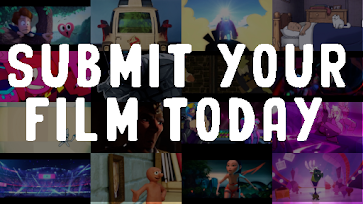Interview: Michaël Dudok De Wit, director of 'The Red Turtle'
‘The Red Turtle’ is the first time Japan’s legendary Studio Ghibli animation studio (producers of ‘Spirited Away’ and ‘Princess Mononoke’, among others) has partnered with a non-Japanese co-producer, in this case, French company Wild Bunch and Oscar-winning Dutch-born animator Michaël Dudok De Wit. The movie premiered in the Un Certain Regard category at the 2016 Cannes Film Festival and was nominated for the ‘Best Animated Feature’ Oscar at 2017’s Academy Awards.
Q: What was the genesis of ‘The Red Turtle’, and in particular the link with Studio Ghibli?
I had met the guys at Ghibli socially before, at animation festivals and so on, but nothing formal until they approached me. I already had the idea for the movie, though at that stage I didn’t know it was going to be a turtle in the role of the animal. I had only produced short movies and commercials before, so it was a new thing for me, and they had never worked with anyone outside Japan in this way, but they said they thought my style was “very Japanese”. I asked them later what that meant but they didn’t say!
Q: Did they give you free rein?
They were very supportive, creatively. They didn’t want me to create a Ghibli movie, they wanted me to make the movie I wanted to. But they were clear about what they did want. They said “we think it’s a picture of 80 mins”, and that was very useful, it gave me parameters. It’s very important in animation, because every minute is extra expense, but making commercials in particular you are used to working in very strict limits.
Q: Was budget one of those limitations?
Of course. The budget for the movie was €10m, which was comfortable but still modest. It’s nothing compared to what happens in California. But the big Hollywood movies can make $100m or even $1bn. It’s a totally different thing.
Q: And how difficult was the process? How long did it take?
We started in early 2007 and finished exactly a year ago. During the development phase, I often worked alone, that took about four and a half years, pretty much doing thousands and thousands of drawings and rejecting many of them. That was slower than anyone expected, including the producers and me, as I’m usually known for working quite quickly, but they were very patient.
Q: Did it concern you that you’d never worked on a feature-length movie before?
That was exciting, but it was tricky also. My biggest fear was that in a quiet moment, viewers would disconnect, and there are lots of quiet moments. I’m only used to short films and commercials, and for most of those, even if you are not really into it, you keep watching because you know it’s going to be over soon. But with a feature film the viewer can get angry with the movie if it isn’t strong enough. So I spent time working to refine that as much as possible and make sure it keeps you in the story.
Q: You have said previously that the movie is open to viewer interpretation, but did you always intend to make a love story?
No, but once we started, it was very quickly there. Making a whole film focused on one guy, it’s tricky and didn’t need to be that. But it’s not a ‘normal’ love story, they don’t flirt and go through big dramas and break ups, and it’s stylised, there’s no sex or anything. It’s simple, a bit shy even, it’s obvious they should be together.
Q: Did you always intend it to have no dialogue?
No, from the beginning I thought there would be dialogue, maybe 10-15 lines, something like that. I thought he would definitely say something to her at some points. but when we tried it, initially, it just wasn’t working. I was telling everyone “oh, don’t worry, when we have professional actors doing it, it will be completely different”, but the more I thought about it, the more I thought “oh, no, this doesn’t work”, and then when we removed it, we realised we didn’t need it. So that was very pleasing.
 |
| A love story, but not as we know it |
No, I was definitely inspired by Magic Realism, books like Gabriel Garcia Marquez’ ‘One Hundred Years of Solitude’ and Ben Okri’s ‘The Famished’ had a profound effect on me. What struck me in that style, the magic is very believable, the magic is not that far from reality. While the film clearly marks the difference between dream and waking life, it also keeps them very close – the boundaries dissolve. What we call reality is very subjective.
Q: Is it a philosophical film, then?
I’m not a philosopher, I’m more intuitive. I’m passionate about philosophical discussions but always want to bring it back to the experiential side – how do we experience life. Otherwise it stays on a mental level and that’s fantastic, but it's not enough. If there’s a metamorphosis, like there is in ‘The Red Turtle’, we need to stay grounded. He’s surprised like you and I would be, but then he moves on from it, it becomes his reality.
I also think it’s important to retain the magic. I genuinely want to be as transparent as possible when I’m storytelling, but I find it difficult. The more you talk about something, the flatter it becomes. If I was good with verbal language I would have been a poet or a writer, but I’m a visual artist. Even with the producers, I couldn’t explain my ideas, I had to show them. Luckily, Ghibli were very good with this. The Japanese are used to making movies which deal beautifully with mystery, play with it beautifully and consciously. They understood that in this film, it may work with the audience but it needs to be handled sensitively.
Q: Did you actually go to a desert island for the movie?
Haha, yes, sort of. I went to one of the smaller Seychelles. It was actually inhabited, there were some shops, and even a bank, but there were remote areas. There were also great outcrops of granite rocks. It was genuinely really beautiful. You’re aware that tropical islands are idealised in many depictions; when they’re beautiful they’re amazing. But the sky is not always blue, the beaches can be covered in debris, algae, you can be plagued by mosquitoes. It was important, narratively, that it not be idealised, because if the island is that beautiful, how believable is that he wants to leave?
That was another reason for the choice of colours. The formula [reporter’s note, think ‘Lilo & Stitch’ or ‘Moana’] is to go full colour, push the colours to the limit. I respect that, I’ve done it myself, but in this film I felt let’s not do it; let’s not saturate it, there’s beauty in a grey sky.
Q: And how do you think you’d cope with being stranded on a desert island?
I’d find it very difficult. I spend a lot of time working on my own, loneliness is not a shock, but in the longer term I think it would find it very difficult. I remember listening to [Radio 4 programme] ‘Desert Island Discs’, where the guest was [celebrity chef] Nigella [Lawson]. As her allowed luxury item, she chose a suicide pill! The interviewer was very surprised but Nigella said that she wanted to have the choice and if she wanted to end it, she would want to do it quickly. When I did research about people who have been in similar circumstances, some people go mad, they just can’t take it, they leave diaries which are found after they die, describing the hell.
I’m very good with my hands, the beaver part of me would want to make a shelter. When I was researching, I did make some models out of bamboo, had immense joy doing that and can imagine they would be beautiful and perfect to live in. But I wouldn’t be a Robinson Crusoe, making parasols out of goatskin, chairs and tables and so on. And I don’t have any illusions about health. It only takes one infection and you’re gone!
Thanks so much to Michael and to Asa at StudioCanal for making this interview possible! The Red Turtle is now in select UK Cinemas, check out our review here.
























